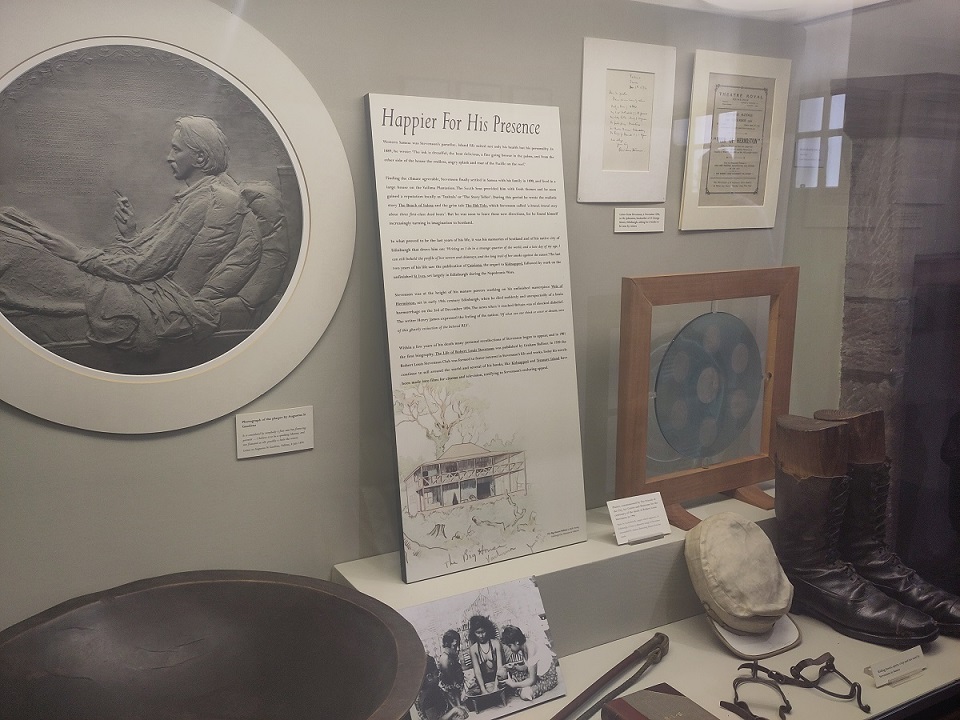Edinburgh teen Eve Williamson has been visiting our venues and latest exhibitions. In her next blog, she shares her experience of the Writer’s Museum on the Royal Mile.
During a free week in June, I decided to take a trip to some of the museums and attractions around the Edinburgh city centre. I love English, history and learning more about Edinburgh so I was super excited to visit the Writers’ Museum. Because I lived outside of Scotland for a few years, it meant that I didn’t learn lots about classic Scottish writers everyone knows. Unlike many of my friends, I have never had to learn nor recite a Burns poem, so the museum felt like a good place to catch up on stuff I have missed. I’ve actually been there before and could remember loving it, so after visiting the City Art Centre with my friend, I headed off to see it again.

Robert Burns
Robert Burns was born in 1759 and died aged 37 in 1796. He was raised to be a farmer but grew up to be one of the most important Scottish writers of all time. If you live in Scotland, it’s impossible to not have heard of him, partially because his iconic poetry is taught to us in schools as well as the fact that on the evening of 25 January, Scots across the country - and across the world - gather to eat a Burns Night meal. Even when I lived abroad, my family still sourced haggis, neeps and tatties on his birthday and sometimes we even met up with other Scots to celebrate it.
However, despite having heard a lot about Burns, I still learnt loads from the Writer’s Museum. For example, I didn’t know how Scottish poetry was experiencing a ‘Golden Age’ due to a poet called Allan Ramsay and another called Robert Fergusson, who was so important to Burns that he paid to give him a gravestone after finding out he was buried in an unmarked grave. It was cool to see Burns’s inspiration and find out more about the context he was writing in. In terms of the museum itself, there was a huge collection of artefacts related to Burns. You could see old manuscripts, objects he owned, his work itself and, wildest of all, a plaster cast of his skull.
Sir Walter Scott
Sir Walter Scott was born in 1771 and died aged 61 in 1832. I discuss him a bit more in my blog about the Scott Monument, a 61m tall memorial designed in a competition to commemorate Scott that began its construction in 1840. Scott pioneered the genre of historical fiction writing, reimagining real people and events through a fictional lens, including his novels ‘Rob Roy’, ‘Waverley’ and ‘Ivanhoe’. As a writer, he was not only prolific - writing 25 novels and several poems - but successful, and his works ignited a passion for Scottish culture and history, so much so that the King wore a kilt after it had been banned due to Jacobite rebellions. Though some of his writing on Scotland and history was perhaps overly romanticised and unrealistic, it cannot be denied that it had a huge cultural impact on not only Scotland, but on the rest of the world.
One thing I did not know about Sir Walter Scott was his childhood struggles with illness - most likely polio - which temporarily rendered his right leg useless. You could see this in the various objects he owned, from his walking cane to a child's rocking horse with two differently placed foot holds. It was an aspect of Scott’s life I had not heard about and it was interesting to see how his needs would’ve been accommodated hundreds of years ago. My personal favourite artefact was his pipe just because of how intricate the design was.
Robert Louis Stevenson
Robert Louis Stevenson was born in 1850 and died aged 44 in 1894. He wrote several all-time classics, including ‘Treasure Island’, ‘The Strange Case of Dr Jekyll and Mr Hyde’ and ‘Kidnapped’. His novels continue to be heavily discussed to this day. Stevenson travelled all around the world before eventually settling down in Samoa, where he died from a stroke. Despite his adventures abroad, it was interesting to see how he continued to write about Edinburgh, something I did not know about him. My personal favourite exhibit about Stevenson was the one about his times in Samoa and the positive reputation he gained with the local people.

Overall experience
I had a really great time at the Writers’ Museum. I went in expecting to have a good time but not learn too much, especially because I’d been there before, but when you take the time to really dig into every exhibit you’ll see just how much there is to learn from the various artefacts on display. I also loved how the building itself was incredibly beautiful, both internally and externally, and how the engraved quotes on its surrounding courtyard continue the celebration of Scottish literature even when you’ve left the museum. I had a great time, and I can’t wait to go back and learn even more when I have a spare hour in town.
